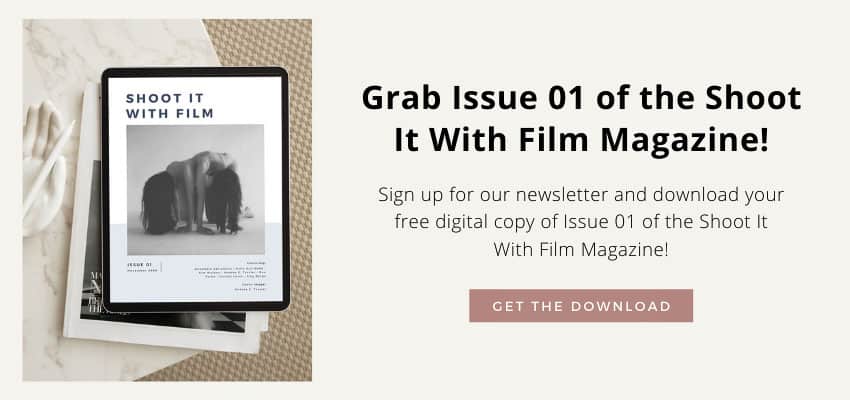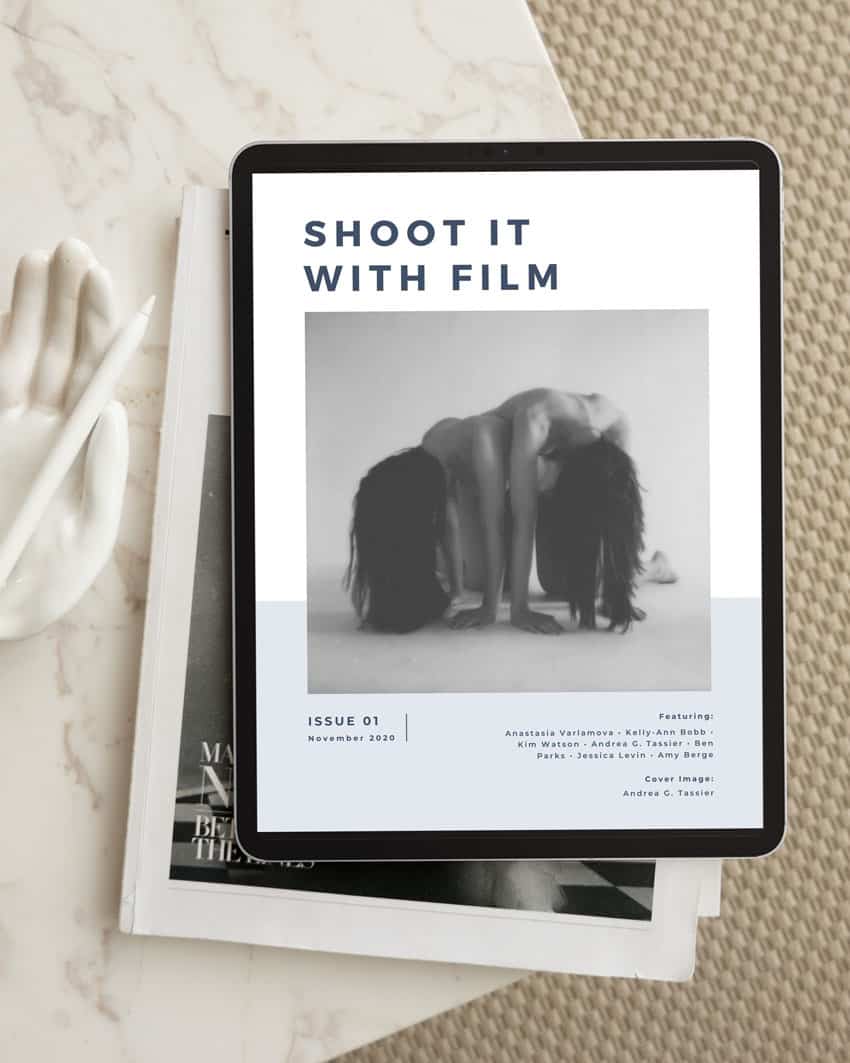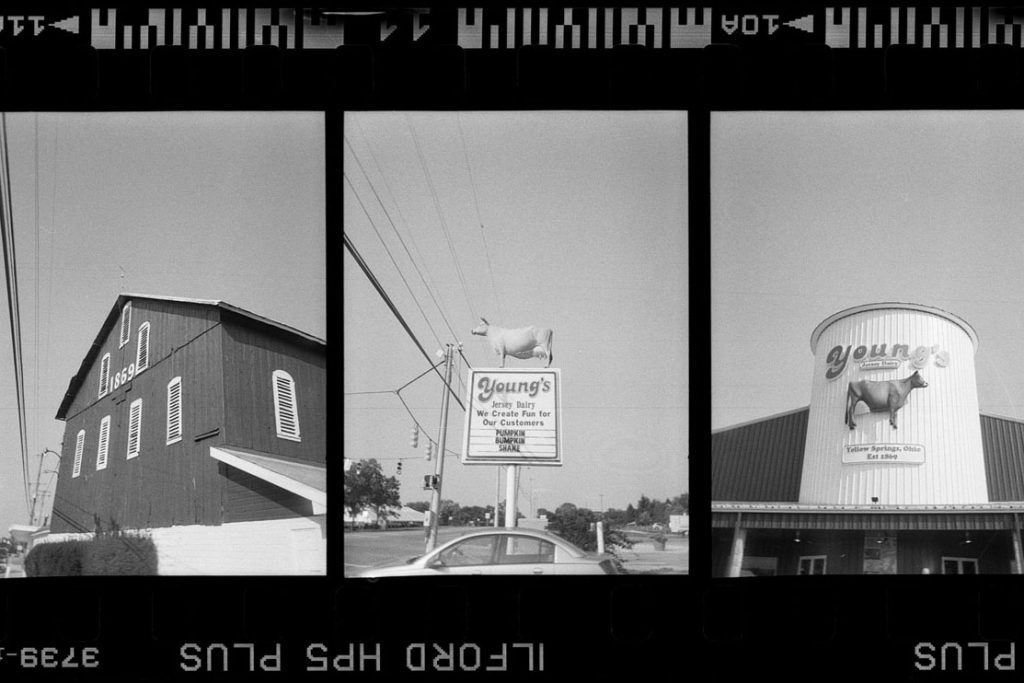
Late last year, Kodak updated their Ektar H35 point and shoot plastic camera, adding a whole host of new and exciting features.
I’m a big fan of original Ektar H35, so when they reached out to see if we wanted to test the new camera, it was an immediate yes. I was curious to see what updates they made and what effect those updates would have on the shooting experience and image quality.
Find the Kodak Ektar H35N on Amazon.

An Overview of the Kodak Ektar H35N
The Kodak Ektar H35N is a half-frame reusable plastic film camera with a glass lens developed by RETO, a Brand Licensee of Kodak.
A half-frame camera gives you twice as many frames per roll of film, since each shot only exposes half of the frame. So in a standard roll of 36 exposures, a half-frame camera will give you 72 images. It’s a great way to save money and get a little more out of each film roll.
The camera is a simple point and shoot with a fixed 22mm F11 glass lens (the lens is F8 when flash is enabled) and a fixed 1/100s shutter (as well as bulb shutter). It’s made of plastic, super light, and about the size of your hand.
The Ektar H35N is a great everyday snapshot camera. Light and small enough that you can take it anywhere, a bit more elevated than a disposable (and more fun to use), and with 72 frames per roll, it’s perfect for documenting life’s little moments.




Kodak Ektar H35N Specifications
Film Format: 35mm (Half Frame)
Film Transport: Manual Wind And Rewind
Optical Lens: 22mm F11 (F8 with flash on), Coated
2-Element Lens: 1 Glass Lens, 1 Aspherical Acrylic Lens
Shutter Release: 1/100s, Bulb Shutter
Flash: Built-in
Filter: Built-in Star Filter
Power Supply: 1 AAA Alkaline Battery (not included)
Dimensions: 110mm(W) x 62mm(H) x 39mm(D) / 4.3” x 2.4” x 1.5”
Weight: 110g / 3.8oz
Materials: ABS / Aluminium



Using a Half-Frame Film Camera
If you’re unfamiliar with shooting half-frame cameras, there are a couple of things that can be helpful to know.
First, the images are half the size of a standard 35mm image. This means that your film scans, whether you scan them yourself or send them out to a lab, will be very small. Half the size of your normal scans. You may need to upgrade to a larger scan if you want to share online or print, or increase the ppi if you’re scanning at home.
Since the negative is so small, this also means the grain will be more pronounced. The image is enlarged quite a bit, so that grain will be enlarged, too, making it more noticeable than on a regular 35mm frame.
Also, the camera will shoot a vertical image when you’re holding the camera horizontal. Since it splits the negative frame in two, it changes the dimension/orientation of your frames. Instead of one horizontal image, it’s split down the middle with two vertical images. The viewfinder does reflect this, though, so you don’t have correct for it on your own.
There are a few challenges and things to get used to when shooting half-frame, but it is also really fun. My favorite part about using a half-frame camera is that it naturally allows for diptychs and triptychs.
Diptychs are when you pair two images together as one piece of art. Triptychs are three images. Since half-frame cameras give you a string of vertical images side-by-side on your film negative, you can easily crop them into pairs or trios.
It’s a fun way to share your images and lean into the uniqueness of a half-frame. It’s also a great creative project to intentionally shoot diptychs and see what image stories you can create.
Here’s more info on scanning film borders to create diptychs and image stories.


Upgrades from the Ektar H35
Kodak released the Kodak Ektar H35 in 2022 and the Ektar H35N in late 2023. They made quite a few updates with the H35N, which was so cool to see in such a simple camera. They improved the lens, added features, and did some design updates as well.
The glass lens is the main upgrade from the original Kodak Ektar H35. The H35 had an acrylic lens while the H35N has a coated, glass lens to improve the sharpness of the images.
I have both the H35 and the H35N, and I did notice a bit of improvement in the sharpness and clarity of my images. But it’s important to keep in mind that this is still a simple camera modeled off of a disposable point and shoot. The images are still going to have the feel of a disposable camera.
For me, the glass lens and construction of the camera helped me have more keepers in a roll and more consistent, better quality images over other disposable and plastic cameras.


The H35N also added a star filter that can go in front of the lens and create a 4-point star burst effect for any light sources. The filter is built into the camera with a small lever on the front of the camera to move it into place.
A note about the star filter. It’s very easy to forget the star filter is in front of the lens and that the lever is engaged. There are no visual indicators except that the lever is flipped up. Having the filter on when you’re not shooting light flares is not a big deal, but you’re putting a piece of plastic over the glass lens and losing some of the benefits the glass lens will give you. Just something to keep in mind.



The Ektar H35N comes with a few more upgrades, specifically bulb mode with a cable release port and tripod threads. So you can definitely have some long exposure fun with this camera.
While the basic build is the same, the look of the Ektar H35N also got a few updates over the H35 model. The H35 had a matte, leather-looking material on the front reminiscent of vintage cameras (you can see it here). It comes in five natural colors: black, sand, sage, brown, and off-white.
The H35N has a shinier, more playful look with three colors in a stripe pattern (green, black, and gray) and three colors in a shiny, glazed pattern (pink, blue, and orange).

The front of the camera has the wheel around the lens to turn the flash on & off and the lever next to the lens for the star filter.

Right: Bottom of the camera with the battery compartment, film release button, tripod threads, and film rewind crank
Final Thoughts
I’ve tried a handful of the new compact, plastic point-and-shoot film cameras on the market, and I keep coming back to the Kodak Ektar H35. It’s been my daily snapshot camera for a couple of years now, and I am so excited to upgrade it to the Ektar H35N. The new features are great, and it still retains all of the charm and ease-of-use as the H35.
100% worth giving it a try if you like using a disposable camera but want something reusable with more durability and some fun features.


Leave your questions or thoughts about Kodak Ektar H35N below in the comments, and you can pick one up for yourself on Amazon here.








Blog Comments
ed
October 25, 2024 at 11:39 am
Nice photos. You spelled losing wrong
shootitwithfilm
October 28, 2024 at 9:29 pm
Thank you, Ed! We corrected that typo.
stan
October 26, 2024 at 7:22 am
Hi, thx for the article. Any recommendations for films and sensibility? I used the EKTAR H35N with a 200 ISO film, good results in bright daylight. But underexposed photos in cloudy light environment. Trying now with Ilford HP5 film (400 ISO).
What do you recommend?
Thanks,
Stan
shootitwithfilm
October 28, 2024 at 9:39 pm
Hi Stan! I usually use 400 or 200 speed film with this camera, but the camera does struggle in lower light situations. It really excels in bright sunlight, similar to a disposable camera. So it’s more of a lighting issue than a film speed issue, and I would probably opt for a different camera on overcast/cloudy days or in any kind of low light and use this camera on bright, sunny days.
Martyna
July 23, 2025 at 9:54 am
Thank you for sharing – you’ve convinced me 😉 !